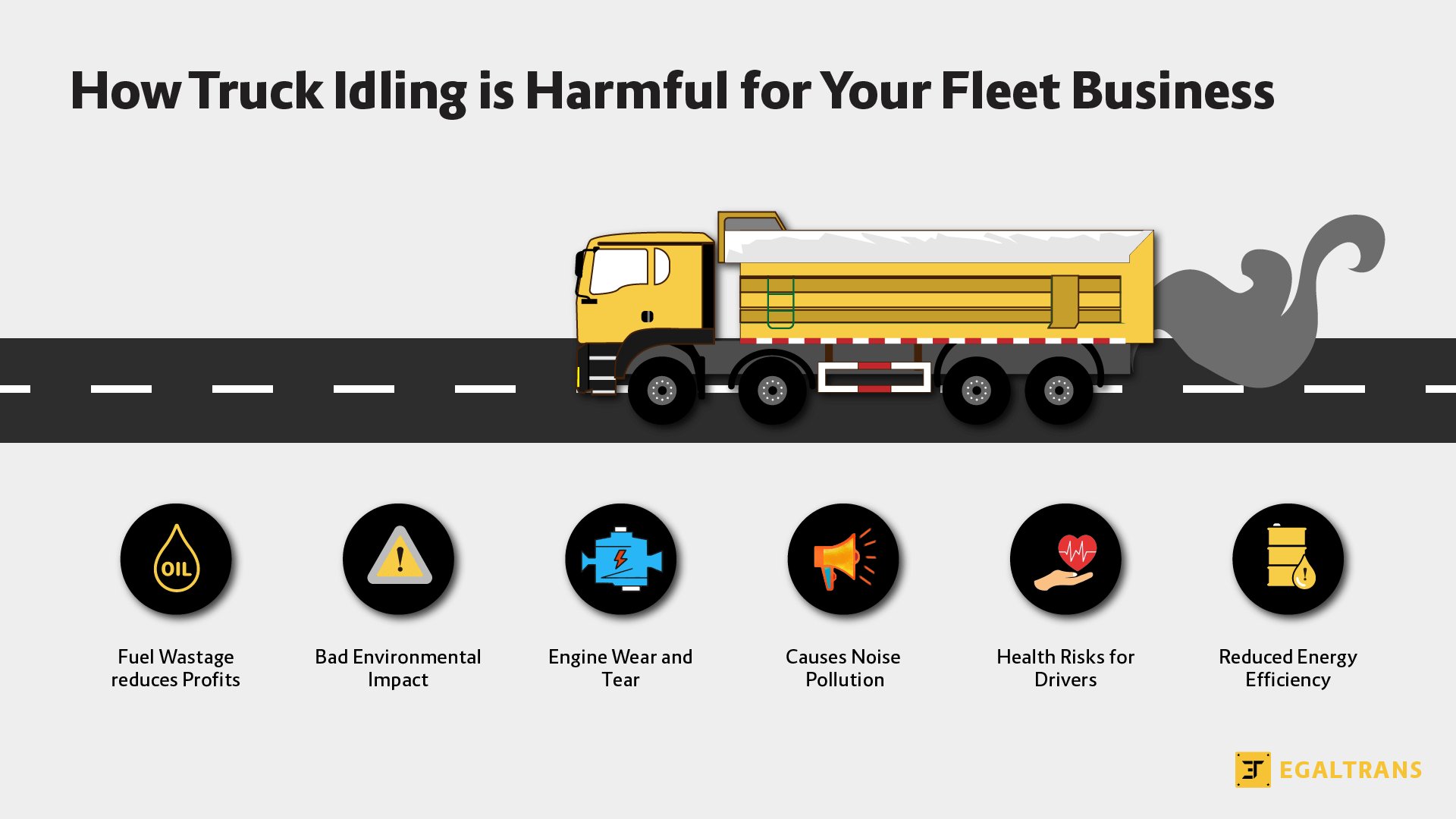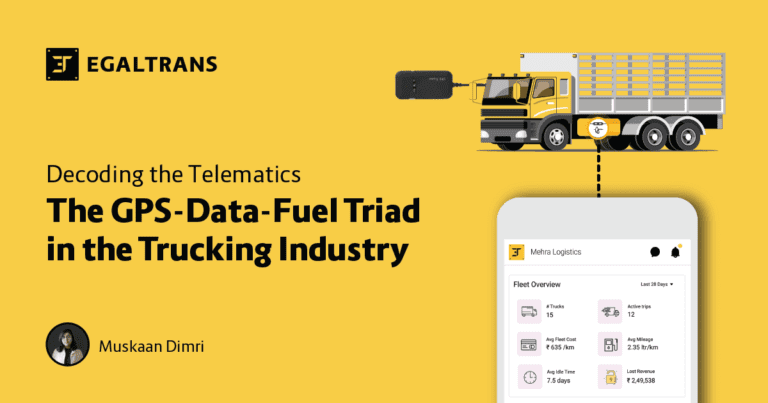When you picture a truck, you might imagine it barreling down the highway or parked at a rest stop, but there’s a hidden scenario that’s silently draining resources: idling. Whether it’s to keep the truck cabin warm on a chilly night or to run auxiliary equipment, idling is more costly than many realize, both financially and environmentally. Let’s delve deeper into understanding the true cost of idling and why it matters for fleet owners in the logistics industry.
Why Trucks Idle?
Trucks often idle due to a combination of operational needs and driver comfort. Whether it’s to power auxiliary systems, such as climate control for the driver’s cabin or refrigeration for cargo, or to navigate stop-and-go traffic without the perceived inefficiency of repeatedly restarting the engine, idling becomes a frequent practice. This behavior, although costly in terms of fuel and environmental impact, is sometimes seen as a necessary aspect of the trucking industry. Following are some of the major reasons why trucks idle:
1. Climate Control
Truck drivers, during extended trips, rest and sleep in their cabs. In extreme weather conditions drivers keep their engines running to ensure the cab remains at a comfortable temperature. In colder climates, it’s a common practice to idle the engine to warm it up, ensuring it runs efficiently during the journey and reducing potential wear and tear from cold starts. This combination of factors, from ensuring driver comfort to maintaining the integrity of cargo and equipment, culminates in the prevalent practice of truck idling.
2. Powering Auxiliary Equipment
Powering auxiliary systems in trucks often leads to prolonged idling because many of these systems are directly dependent on the truck’s main engine for their power needs. While newer trucks might come equipped with separate auxiliary power units (APUs) that can run these systems without the need for the main engine, many older models or those without APUs don’t have this luxury. Furthermore, there’s a common perception among some drivers that the fuel consumption associated with starting the engine multiple times could surpass the fuel consumed during idling, particularly during shortstops. This belief, coupled with the necessity of maintaining auxiliary systems, frequently results in the decision to keep the truck idling.
3. Traffic and Wait Times
Sometimes, trucks have to wait at loading docks, border crossings, or in traffic, causing prolonged idling. In dense traffic scenarios, drivers might anticipate movement and therefore keep their engines running, expecting the standstill to be temporary. Repeatedly turning the engine off and on in stop-and-go traffic might be perceived as inefficient, potentially harmful to the engine, or simply inconvenient. Additionally, in many cases, the stopping durations might be unpredictable, making it harder for drivers to decide when to turn off the engine. In essence, while idling might seem like a static, non-consuming state, it’s quite the opposite. The cumulative effect of these factors makes the issue of idling in traffic and during wait times a significant concern in the logistics and transportation industry.
Consequences of Truck Idling
Truck idling can have serious consequences for a fleet and may lead to severe losses. Prolonged truck idling leads to increased fuel consumption, escalating operational costs for logistics companies. Beyond the financial impact, it contributes significantly to environmental degradation by emitting greenhouse gasses and pollutants.
1. The Financial Cost
Idling isn’t free. Even if a truck seems stationary, it’s consuming fuel. On average, an idling truck can consume about 4 liters of diesel fuel per hour. Over time, this adds up:
Let’s consider truck idling for 2 hours a day. Over a year, that’s 730 hours of idling, equivalent to 3000 liters of wasted fuel. At an average cost of 100 rs per liter, that’s 1.5 lakh rupees spent yearly on idling alone per truck. Multiply that by the number of trucks in a fleet, and the numbers become staggering.
2. The Environmental Cost
Beyond the direct financial burden, there’s an environmental toll to consider:
- Diesel engines emit carbon dioxide (CO2), particulate matter, and other pollutants. Extended idling contributes significantly to air pollution.
- An idling truck emits roughly 10 kilograms of CO2 for every 4 liters of diesel burned.
This doesn’t even consider the health impacts of increased pollution on communities, especially those near major trucking routes or hubs.
3. Operational Wear and Tear
Contrary to popular belief, idling isn’t gentle on a truck’s engine. Continuous low-speed running can cause incomplete fuel combustion, leading to carbon soot accumulation on cylinder walls, which can damage engine components. Over time, excessive idling can reduce the overall lifespan of the engine, leading to more frequent repairs and maintenance.
Combatting the Idling Issue
To reduce inactivity, fleet owners can:
1. Invest in Auxiliary Power Units (APUs): APUs can power a truck’s equipment and climate control without having to keep the main engine running.
2. Educate Drivers: Training sessions can emphasize the importance of reducing idling, providing strategies and insights on when to turn off the engine.
3. Leverage Technology: Modern fleet management systems can monitor and report idling times, helping fleet managers identify patterns and address issues.
The silent fuel guzzler, idling, is a costly affair for the logistics industry in more ways than one. Beyond the evident financial strain, there’s an environmental cost and wear and tear on vehicles. As the trucking world becomes more conscious of its impact, taking steps to minimize idling becomes crucial. It’s not just about saving money; it’s about paving a sustainable way forward for the entire industry.







